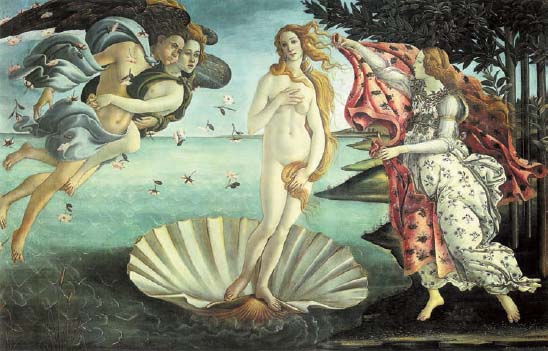The Early Modern World, C. 1300–1600Early Renaissance in Italy |
Why were Botticelli’s paintings burned? |
Sandro Botticelli (1445–1510) was a Florentine painter who was quite frequently commissioned by the powerful Medici family, often to produce secular mythological paintings such as The Birth of Venus (1484–86) and Primavera (1482). Now one of his most famous works, The Birth of Venus depicts the Classical goddess of love and beauty as she is being born out of sea foam. She floats to shore atop a large scallop shell, her hair blowing gently around her body, as she covers her nude body in modesty. She is propelled by the breath of the wind god, Zephyr, who holds his lover, Cloris, in his arms. Small, pink flowers float in the air. Venus is welcomed to shore by a follower who reaches out to cover her with a floral garment. This painting, like the rest of Botticelli’s work, shows the artist’s skill in using single-point perspective and using light to effectively model three-dimensional figures. It is also both erotic and secular.
Things changed for Botticelli when a Dominican monk named Fra Girolamo Savonarola took power in Florence from 1494 to 1498. Savonarola gave powerful sermons in which he accused the city of Florence of being morally corrupt and materialistic. Swayed by Savonarola’s conservative religious message, Botticelli burned many of his own paintings, especially his earlier more secular works. Botticelli’s later work has a decidedly more religious tone.

Scenes from classical mythology, such as Sandro Botticelli’s Birth of Venus (1484–1486), were popular during the Italian Renaissance.
